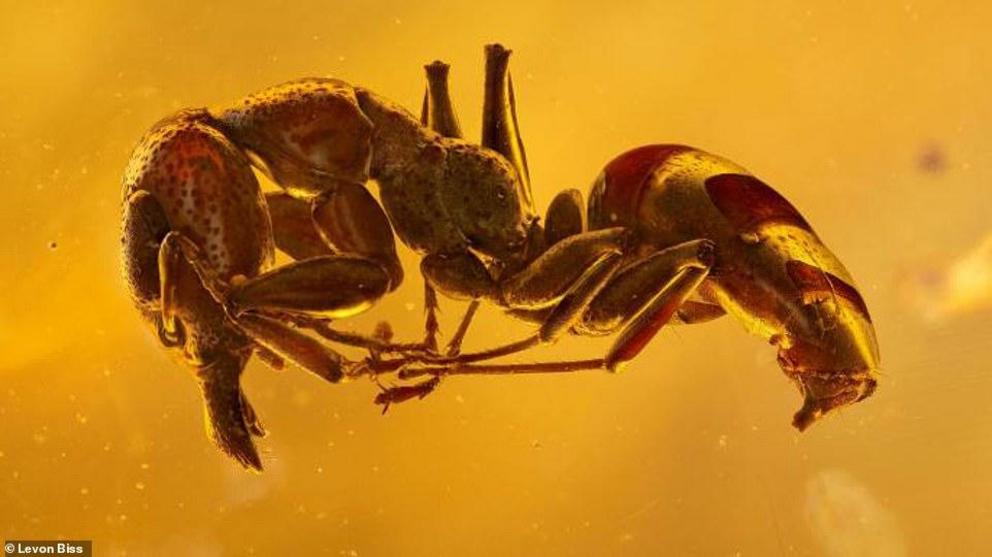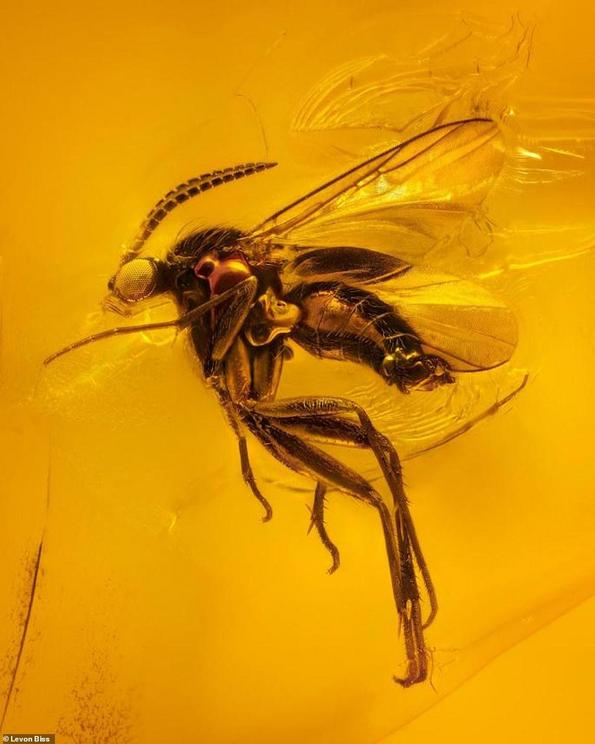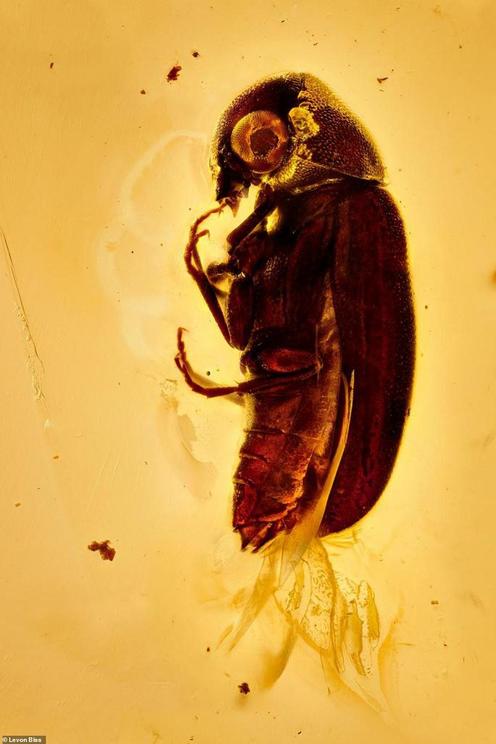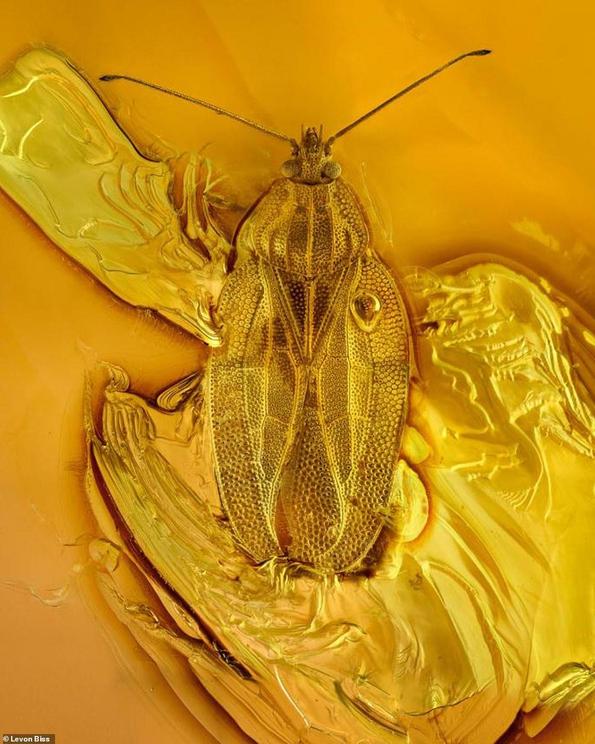Stunning detail of ancient insects preserved in amber 45 million years ago revealed in images from world-renowned British photographer Levon Bliss
A world-renowned British photographer who specialises in capturing images of the world's insects has turned his attention to animals that have been encased in amber for millions of years.
The animals were found along Latvia's Baltic coast an date back between 40 and 45 million years ago.
Levon Bliss, from London and now based in Wiltshire, has published stunning images of ten insects that died when walking along fledgling tree branches after getting trapped in sap.
The sap trapped the unfortunate animals and, over time, hardened to form amber.
Amber preserves the animals in their original condition and its translucent appearance allows the entombed animals within to then be studied.

A park-winged fungus gnat (pictured) that died between 40-45 million years and was discovered in the Baltic region is one of the ten limited edition prints. Levon Bliss, from London and now based in Wiltshire, published stunning images of the insects using his unique method

This image of an ant encapsulated within translucent Amber is created from thousands of separate images using microscope lenses. The specimen is dated between 40-45 million years
WHAT IS AMBER?
Amber has been used in jewelry for thousands of years, and is often found to hold remarkably well-preserved materials from eras long since passed.
The golden-coloured translucent substance is formed when resin from extinct coniferous trees became hardened and then fossilised.
Often insects, plant material, pollen and other creatures became trapped in the resin, causing them to be entombed within after it solidified.
Mr Bliss has released several photography books capturing insects, given TED talks on 'macrophotography' and sells limited edition prints of his work.
The amber-encased insects were polished by Mr Bliss and placed in a liquid with a refractive index similar to that of the amber.
This helps reduce the scattering and 'bending' of light as it travels from one medium to another - such as through air and into water.
If two materials have a significantly different refractive index, light slows down when moving between them and this distorts the image - it is the same phenomena as when a a straw is placed in a cup of water and appears to bend.
By suspending the object in the liquid, light used to illuminate the amber is prevented from 'bouncing around at different angles'.
The images are on sale at Mr Bliss' website and range from £500 to £650 ($645 to $840).
Prints include images of a lace beetle, a fungus gnat and an an ancient spider beetle.

Another fungus gnat. The stunning images are available for between £500- £650 ($645 - $840). Mr Bliss has released several photography books capturing insects, given TED talks on 'macrophotography' and sells limited edition prints of his work

This spider beetle is one of the images created by Levon Bliss. The amber-encased insects were polished by Mr Bliss and placed in a liquid with a refractive index similar to that of the amber. Thousands of images were then layered on top of one another to create the picture

This lace bug is immaculately preserved in the amber. If two materials have a significantly different refractive index, light slows down when moving between them and this distorts the image - it is the same phenomena as when a a straw is placed in a cup of water and appears to bend
Video can be accessed at source link below.

